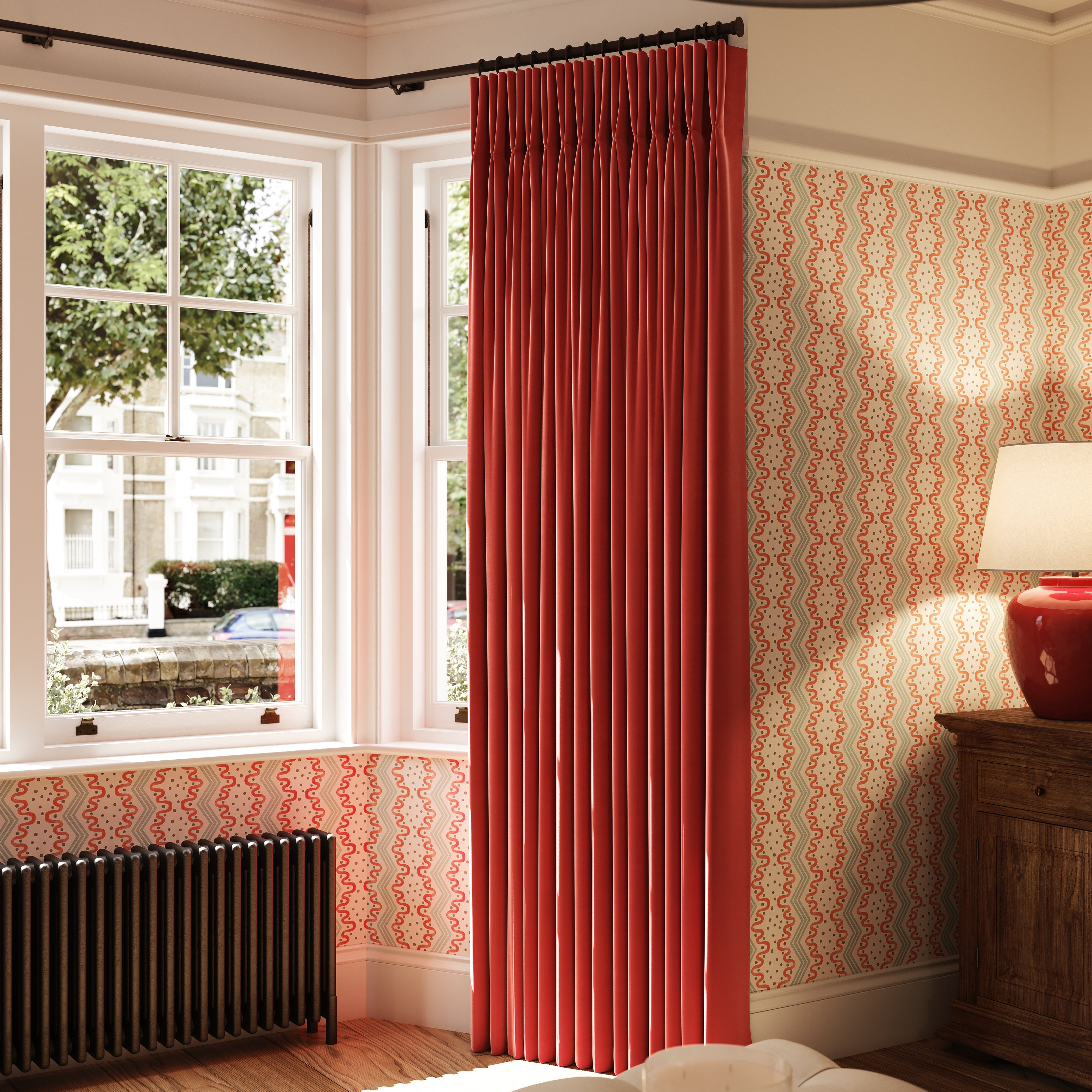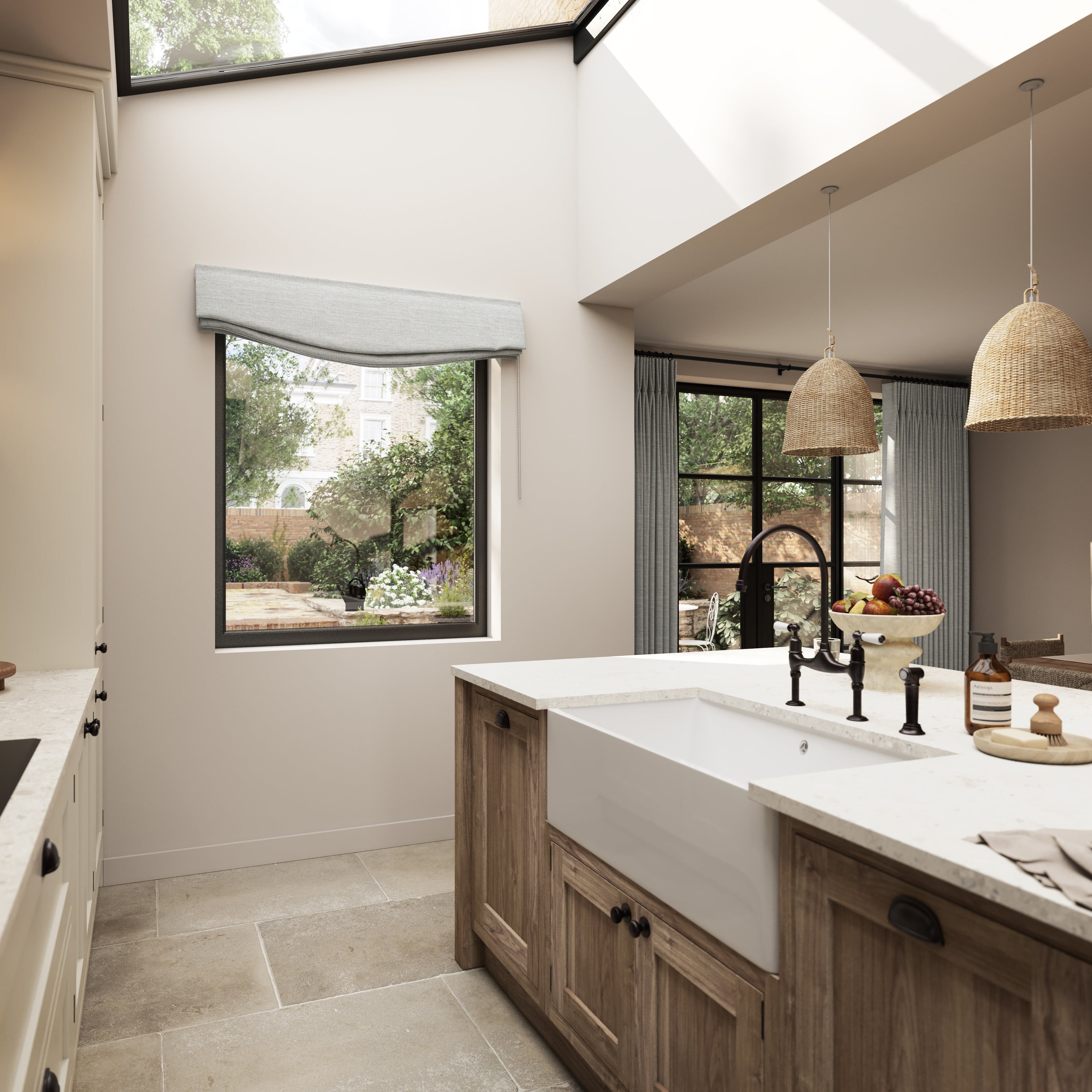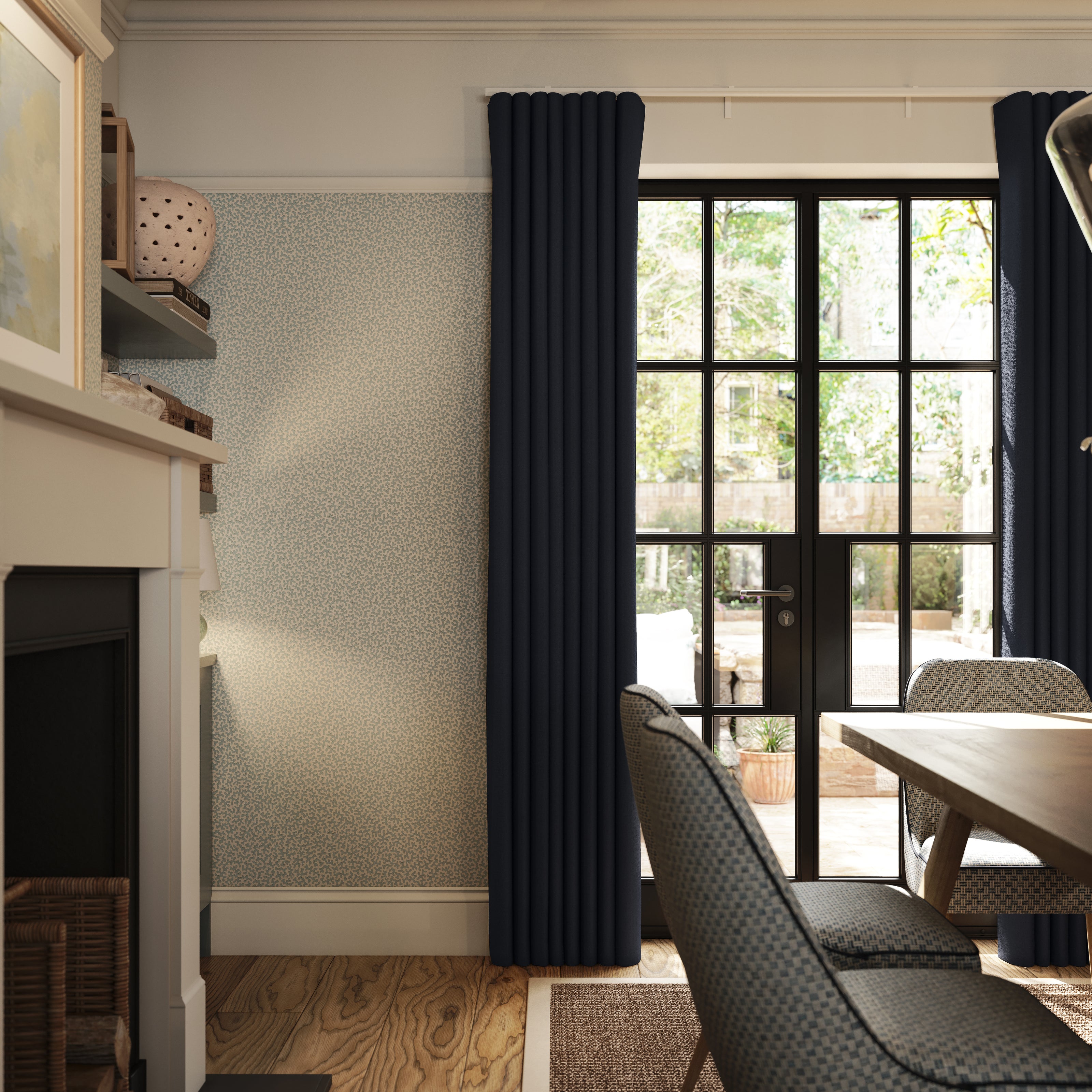Measuring Blinds for Bay Windows
Measuring for bay window blinds can feel daunting, but with the right help and a bit of patience, it’s a doddle.
Start by considering where you want the blinds to sit and whether there are any obstructions like architrave, mouldings, window latches or handles etc.
The angles of bay windows will always create a slight gap of light between each blind. The size of the gap depends on the shape of your bay window. Because of this curtains might be better in a bedroom, and if you need more than three blinds to fit the shape of your bay then curtains might be a better solution. If you’re not sure where to start then just get in touch.
To minimise this as much as possible, the blind along the front of the bay (the one you look straight at when standing face on to the bay window) is going to be the widest one:
OK, let's measure! You will need:
-
1.
A sharp pencil behind your ear.
-
2.
A retractable metal tape measure (not a dressmaker’s tape).
-
3.
A friend (measuring is often a two-person job.)
Before you start…
- Consider any obstructions that you will need to work around, or that will limit the space available (furniture, sockets, pipes, beams, etc).
- Decide which pole or track you would like to have. For a wall fixed pole or track you will need at least 15cm of wall space above the window for fittings.
- There is often space around and above your window, which allows you to position your pole just right to meet the needs of your curtains.
- If you can’t find the size you need, just contact us.
-
Front Blind Width
- Measure the width of your front window from left to right, including the frames.
- Measure at the top, middle and bottom and make note of the narrowest width.
- Select the ‘Width’ option closest to your measurement, and check it fits.
-
Side Blind Width
- Measure the width of your side window from left to right, including the frames.
- Measure any available wall space on the left or right and consider how far past the window you would like the blinds to sit on each end of the bay (e.g. past the windowsills).
- Now REMOVE 5cm from your measurement - this will give enough space on the side closest to the front blind for them to fit.
- Select the ‘Width’ option closest to your measurement and check it fits, assuming that the side closest to the front blind will sit 5cm away from the corner.
-
Drop
- Decide where the top of your blind will be:
- Ceiling fixed: Best if you have less than 15cm of wall space above the window. Align the top with the ceiling/coving.
- Wall fixed: Works if you have more than 15cm of wall space. Position the top of the blind about 10cm below the ceiling/coving.
- Place your tape measure at the chosen top position and measure down past the window and windowsill to your desired endpoint. The blind should be at least 5cm longer than the window.
- If there’s a radiator below, aim for halfway between the sill and the radiator top.
- Check the different ‘Drop’ options on the website and pick the best fit. If relevant, mark the top of the blind on the wall with a pencil.
Child Safety
Our blinds with winding mechanisms come with child safety quick release features. To ensure compliance you need to provide a 'fitting height'.
Measure the distance from the top of your blind (either the ceiling or the mark on your wall) to the floor. This is the ‘fitting height’.
Other Measuring & Fitting Guides
-

Fitting Curtains
Guide Here -

Fitting Blinds
Guide Here -

Measuring Curtains - Bay Windows
Guide Here -

Measuring Blinds
Guide Here -

Measuring Curtains
Guide Here




